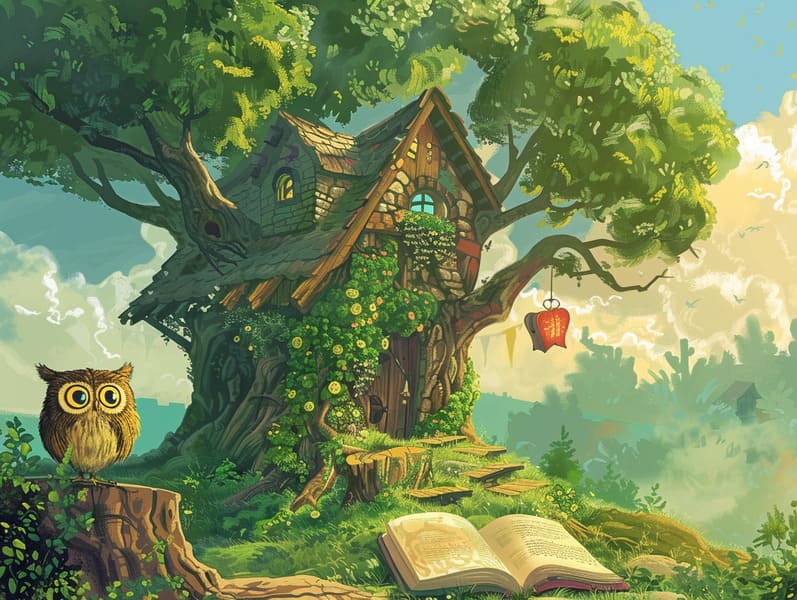
Timeless fairy tales have enduring presence. These tales have been passed down from one generation to the next centuries before they were ever inscribed. They originated from a variety of backgrounds, including European traditions. They were initially transmitted among elders, often carrying themes and messages relevant to the societal norms and beliefs of the time.
Jacob and Wilhelm Grimm, Jacob and Wilhelm, were among the first to assemble many of these beloved narratives. Their volume, "Grimm's Story Collection," included stories like "The True Bride," "The Bread Crumb Trail," and "Snow White," which have since become cornerstones in the world of timeless fairy tales. Similarly, H. C. Andersen's enchanting narratives, such as "The Story of the Little Mermaid," and "The Duckling that Could," have enchanted hearts worldwide, securing their place in the pantheon of classic fairy tales.
Though they are old, these stories remain as significant as ever, especially as kids' bedtime tales. These enchanting tales are now available in multiple formats, including beautifully illustrated books, magical animations, and online storybooks.
Their lasting appeal can be attributed to several magical reasons:
Ethical Lessons: Traditional fairy tales often offer important moral lessons. Tales like "The Wolf and the Liar" teach the significance of being truthful, while "The Tale of the Tortoise and the Hare" demonstrate the virtues of steadfastness and humility. These tales offer young readers clear distinctions between truth and falsehood, developing their moral compass in a gentle yet impactful way.
Compassion and Insight: Fairy tales frequently feature personalities facing struggles and tests, inciting listeners to feel with their struggles and applaud their triumphs. For instance, "The Tale of Beauty and the Beast" highlights the merit of looking past the exterior to perceive the true character of a soul, strengthening compassion and insight.
Cultural Recognition: Many old fairy tales are infused with the cultural contexts from which they arose. Engaging with these fairy tales can provide delightful insights into different beliefs, strengthening a sense of global awareness and recognition.
Creativity and Imagination: The extraordinary elements in fairy tales—magical kingdoms—engender children’s creativity. These stories carry readers to fantasy realms, kindling imaginative dreams and a sense of marvel that lasts a lifetime.
Classic fairy tales are not only magical but also enlightening. They work as fantastical tools in cultivating various thinking and feeling skills in little ones. When timeless fairy tales are spoken, they foster speech development by presenting new phrases and detailed sentence structures. This practice also boosts listening abilities and mindfulness, as young ones follow the story, enthusiastic to see what happens next.
Furthermore, contemplating the themes and characters of ancient fairy tales can advance critical thinking and evaluative skills. Young readers are educated to discover patterns, expect results, and make sense of cause and effect. These contemplations also contribute to children express their thoughts and feelings, cultivating their emotional intelligence.
In today’s high-tech era, the existence of web-based fairy tales has made these fairy tales more available than ever. Web-based platforms and digital apps make available ample collections of bedtime fairy tales that can be seen or heard anytime, anywhere. Fairy tales read out loud are particularly well-received, sharing an delightful method for the young to take part in these fantastical tales. Read-aloud books and narrated videos bring characters and settings to life, often enhanced by entrancing background sounds more info and background music that intensify the narrative adventure.
The unfading fascination of ancient fairy tales lies in their ability to change to the present while retaining their central values. Contemporary renditions of these fairy tales often show more diverse characters and modern settings, making them pertinent to today’s audience. However, the underlying themes of valor, generosity, and integrity remain unchanged, continuing to strike a chord with young listeners of all ages.
Fairy tales also offer a sense of security and familiarity. They bequeath a orderly narrative with a clear beginning, middle, and end, often finishing with the termination of conflicts and the triumph of justice over injustice. This regularity can be encouraging for young readers, affording a sense of consistency in an ever-changing world.
Ancient fairy tales continue to fascinate and inform new generations, maintaining their allure and relevance in modern society. As children's night stories, they extend a perfect blend of charm and enlightenment, enriching moral values, empathy, and creativity. The proliferation of web-based fairy tales and the favor of fairy tales spoken validate that these classic stories remain attainable to new generations.
By retaining and divulging these narratives, we continue to exalt the rich tapestry of fables and cultural heritage. Whether you are browsing a artistically illustrated book, delving into a web-based library, or hearing an narrated book, the mystique of popular fairy tales is always within reach. These stories show us of the consistent strength of narratives and its ability to draw us together across centuries and lands.
Even if you are experiencing a beautifully illustrated book, seeing a web-based library, or hearing an sound book, the elegance of traditional fairy tales is always within reach.
These stories show us of the immortal effect of tales and its ability to join us across time and space, forming a connection that enchants and educates alike.